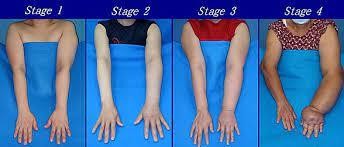A client with diabetes mellitus visits a health care clinic. The client's diabetes previously had been well controlled with glyburide (Diabeta), 5 mg PO daily, but recently, the fasting blood glucose has been running 180-200 mg/dl. Which medication, if added to the clients regimen, may have contributed to the hyperglycemia?
phenelzine (Nardil)
allopurinol (Zyloprim)
Metoprolol (Lopressor)
Methylprednisolone (Medrol pack)
The Correct Answer is D
Choice A rationale: Phenelzine is an antidepressant that typically does not affect blood glucose levels significantly.
Choice B rationale: Allopurinol, used for gout, is not known to significantly impact blood glucose levels.
Choice C rationale: Metoprolol, a beta-blocker, might mask some symptoms of hypoglycemia but is not typically associated with causing hyperglycemia.
Choice D rationale: Methylprednisolone, a corticosteroid, can elevate blood glucose levels and might contribute to hyperglycemia in a person with diabetes mellitus.
Nursing Test Bank
Naxlex Comprehensive Predictor Exams
Related Questions
Correct Answer is B
Explanation
Choice A rationale: Her healthcare provider prescribing a calcium channel blocker for hypertension is not directly linked to lymphedema.
Choice B rationale: Sustaining an insect bite to her left arm yesterday - Trauma or injury, such as an insect bite, to the affected limb post-mastectomy can increase the risk of
lymphedema.
Choice C rationale: Losing twenty pounds since the surgery might influence overall health but doesn’t specifically relate to lymphedema.
Choice D rationale: Her hobby of playing classical music on the piano is unrelated to the risk of developing lymphedema.

Correct Answer is A
Explanation
Choice A rationale: This is a condition that causes scar tissue to form in the penis, resulting in abnormal curvature, pain, and erectile dysfunction.
Choice B rationale: Hypospadias is a congenital defect in which the opening of the urethra is on the underside of the penis, not at the tip.
Choice C rationale: Phimosis is a condition in which the foreskin of the penis cannot be retracted fully, leading to inflammation and infection.
Choice D rationale: Orchitis is an inflammation of one or both testicles, usually caused by an infection.
Whether you are a student looking to ace your exams or a practicing nurse seeking to enhance your expertise , our nursing education contents will empower you with the confidence and competence to make a difference in the lives of patients and become a respected leader in the healthcare field.
Visit Naxlex, invest in your future and unlock endless possibilities with our unparalleled nursing education contents today
Report Wrong Answer on the Current Question
Do you disagree with the answer? If yes, what is your expected answer? Explain.
Kindly be descriptive with the issue you are facing.
